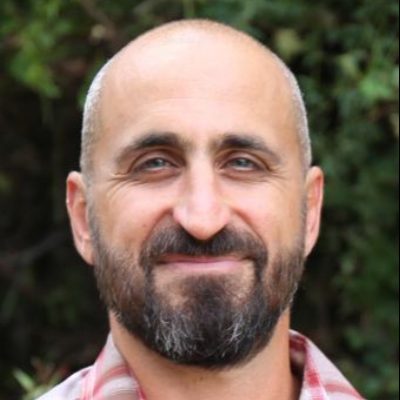10 Tenacious Curiosity
Judd Ethan Ruggill and Ken S. McAllister
By now, you are probably sick of new semester “getting-to-know-you” games, the type professors use to “break the ice” and help classmates get to know one another: “Where are you from?” “What do you like about science?” “Why is your favorite color your favorite color?”
What’s interesting about games like these is how they’re meant to work: they use questions to expedite relationship-building. Ordinarily, it takes a while before you’ll ask a new acquaintance a semi-personal question. Building trust takes time. But by walking a line between the benign and the incriminating, getting-to-know-you questions aim to fast-track good rapport.
This technique of using inquiry to advance camaraderie can be very effective. Under ordinary relationship-building circumstances (such as New Student Orientation or your dorm’s Welcome Home event), asking questions demonstrates that you’ve been listening to the other person and — when your questions are answered — will tell you something meaningful: “You said you were into Áurea Semiseria. What is it about her that you like?” With a single question, an attentive listener can bypass small talk and start a real conversation.
This ability to listen and ask meaningful questions is a great skill to develop in college where virtually everyone — students, staff, administrators, and faculty — are in near constant relationship-building mode — as you’ve probably already discovered. What these relationships look like over time, of course, depends a lot on the attention people give them. One purpose of this book is to help you — a new student at UA — break the ice in these new relationships, especially your relationship with the University of Arizona itself: what is it, how does it behave, what does it expect, and so on. The many contributors to this book know firsthand that new relationships can be awkward and leave even the most experienced lifelong learners struggling to figure out: how do I go from not knowing to understanding? Fortunately, universities have centuries of practice helping learners make that transit, practice that can generally be summed up like this: ask good questions often.
There’s a great word that captures the art and science of asking good questions: curiosity. Sometimes you’ll hear someone say “I’m just curious” before they launch into a question, as if curiosity is trivial or inconsequential. Actually, “curiosity” has its roots in the Latin word curare, which means “to care for.” When we ask people questions — when we express curiosity — we send the message that we care: “I’m interested in what you’re saying. I’m interested in who you are and how you think.”
Do you see how curiosity is key to getting to know new people and to being successful at the UA? It both generates information for you (making you better informed) and conveys to your interlocutors that you’re worth investing time in.
Let’s be honest, though: sometimes you have to fake curiosity. Maybe you’ve been put in a small group of dorm mates so different from one another that it feels like the beginning of a viral TikTok. Or maybe you’re enrolled in a course that seems so esoteric it’s hard to imagine its content ever being relevant to you or anyone else in the known galaxy. In these situations, mustering your curiosity — your care — can be difficult. This is where wondering can give you conversational traction.
While similar to curiosity, the origins of “wonder” lie in the experience of astonishment, of being in the presence of the miraculous: “OMG, Charlette just hand-stacked five M&Ms! I wonder how they did it!” (Or, maybe you just wonder why they did it.) Either way, unless you have your heart set on breaking the M&M Stacking World Record, you probably don’t care much about this feat even though it’s clearly astonishing. (If you don’t think so, try it. We kept trying to get a fourth M&M to stay put…we also ate a lot of M&Ms in the process and had to make a number of unscheduled trips to the store to resupply.) But expressions of wonder (i.e., astonishment) are often misread as curiosity (i.e., care), which can be very helpful when you’re trying to make it through a boring class or a group project.
But there’s an even better reason to express wonder when you’re not really feeling curious. It turns out that, while quite different, wonder and curiosity often intertwine and animate each other. Express your wonder enough and you’ll sometimes inadvertently tap into your real imagination; your wonder will transmogrify into genuine curiosity. The distance between, for example, “It’s a wonder that anyone reads this stuff anymore” and “I’m curious about why this antique text still speaks to people today” can be surprisingly short. And making that journey reveals that you have begun to care.
Researchers — from poets and physicists to political economists and cryptocurrency analysts — excel at making this jump. Veteran researchers like senior faculty have travelled the wormhole between wonder and curiosity so often it’s as natural as breathing to them. That’s why it can be so fun to visit faculty during their office hours. If you have a vague idea about something, go see them. In just a few minutes, they’ll be able to help you either refine that inkling into a project that’s both interesting and doable, or warn you away from it because they know from experience how unruly it’s likely to become.
Interactions like these, where you learn and practice thinking new-to-you thoughts about the world, raises one other vital quality shared by wonder and curiosity: both benefit from collaboration and revision. When possible, when you’re ready, bounce your ideas off other people. Tell your peers and professors your wonderings and hare-brained schemes and see how they’re heard, what other ideas, feelings, and insights they elicit, and to what extent others “care” about your preliminary work. Their responses — encouraging and generative or discouraging and arresting — are all data to further your curiosity. Listen and try not to be defensive. Better yet, try to keep caring for your ideas. This doesn’t mean forcing them to stay the same. It means helping them change and grow stronger. Without fail, the most interesting people, the most compelling research, and the deepest relationships — with people, ideas, and organizations — emerge through the exercise of tenacious curiosity.



